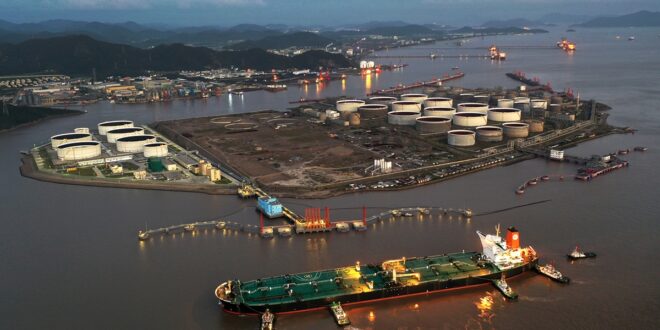Oil prices settled on Thursday at their highest level since December 1 as the market is turning bullish on China’s oil demand this year.
The Chinese reopening is set to drive oil demand growth and push oil higher if most of the developed economies manage to avoid recessions, analysts say.
China likely accelerated the pace of crude oil stockpiling last year, according to estimates by Reuters’ Asia Commodities and Energy Columnist Clyde Russell based on Chinese data on imports, domestic production, and refinery processing rates.
More stocks in commercial and strategic storage could mean that China’s imports may not be as strong as anticipated. But it could also mean that refiners are preparing for a surge in demand in the coming months once the exit Covid wave after the restrictions were dropped fades.
Since China doesn’t report crude oil inventories, it’s all guesswork as to just how much crude the country has stashed over the past year.
As China reopened its borders in early January, authorities issued a massive batch of allowances for independent refiners to import crude oil.
There is one certainty in the oil markets – the economic growth in China has been and will continue to be a key factor in global oil demand, capable of moving oil prices in either direction.
Over the past few days, the key driver of oil prices was the Chinese reopening and the improved outlook on Chinese demand due to said reopening. OPEC and the International Energy Agency (IEA) said in their respective monthly reports this week that the prospects of global oil demand were improving thanks to the Chinese exit from the ‘zero Covid’ policy.
China’s reopening is set to drive global oil demand to a record high of 101.7 million barrels per day (bpd) this year, up by 1.9 million bpd from 2022, the IEA said in its report, raising its demand growth estimate for 2023 by 200,000 bpd from 1.7 million bpd growth expected in December.
“Two wild cards dominate the 2023 oil market outlook: Russia and China,” the IEA said in its Oil Market Report.
“China will drive nearly half this global demand growth even as the shape and speed of its reopening remains uncertain.”
OPEC also expressed more optimism about Chinese oil demand and the global economy this year in its Monthly Oil Market Report (MOMR).
China’s reopening is set to push demand higher, and “In addition, China’s plans to expand fiscal spending to aid the economic recovery is likely to support oil demand in manufacturing, construction and mobility,” OPEC said.
Globally, economies look more resilient than previously expected, the cartel said.
“The global momentum in 4Q22 appears stronger than previously expected, potentially providing a sound base for the year 2023, especially in the OECD economies. The 2022 growth in both Euro-zone and US has surpassed previous forecasts,” OPEC noted.
Moreover, the U.S. looks to have more chances to avoid a recession this year.
“Upside potential may come from the US Federal Reserve successfully managing a soft landing in the US. This is the most likely outcome, given the expected slowdown in inflation and the sufficient underlying demand dynamic,” according to the organization.
Fears of recession may have subsided, but the oil market continues to react with selloffs to every weak economic data point from the United States, Europe, or China.
Nevertheless, market sentiment has turned bullish on China over the past two weeks, which resulted in rising oil prices. This highlights the fact that the Chinese economy and oil demand will continue to drive oil markets this year, alongside economic performance elsewhere, the extent of Russian oil supply losses, and the policy of the OPEC+ group to balance the market and support prices.
 Iran Energy News Oil, Gas, Petrochemical and Energy Field Specialized Channel
Iran Energy News Oil, Gas, Petrochemical and Energy Field Specialized Channel




